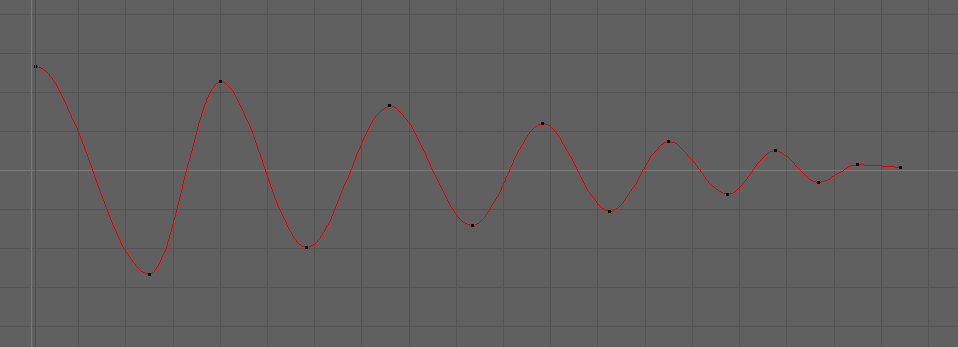In response to my evaluation of last year’s work and as stated in my Computer Arts Practice reflective brief, I want to address some issues that I had in my animations.
The ‘floaty’ feeling of some of the actions in my previous animations just don’t seem right. For example an arm moving through space may not feel like its falling in the arc it should or seem to be defying gravity a little. This is most evident in the Sword Swinging animation.
This semester I want to use the Graph Editor in more depth than I have been doing. It allows greater control of the ‘tweening’ between keyframes, it can be used to achieve the slow-starts, follow throughs and and accelerations I’ve been wanting to achieve but did not. The same keyframes can be used, but with the graph editor an animation can be greatly improved as you tweak the curves.
In the ‘Creative Research’ module I have completed a few exercises in order to better understand the graph editor. The following videos are from that module but I have analysed them here in relation to how this will help with my project for this module this semester.
Pendulum Swing

The first video shows the default unedited curves in the graph editor. The second video shows that by manipulating the curves changes the speed and acceleration of the motion of the object between those two keyframes.
It was in this exercise I discovered the “Weighted Tangents” mode that allows you to scale the size of the curve at a keyframe. Throughout last semester I was unaware this feature existed and was using extra keyframes to attempt to get the motion I wanted. Less keyframes means better control over the animation and therefore better quality animation.

Bouncing Ball
The second task I did was a simple ball bounce. Although I’d used the graph editor before to break tangents to create the realistic ‘bounce’, I was much more comfortable with achieving the motion I wanted.

Head Turn
Although not a typical animation exercise, I also tried a head turning. Not only does the head turn but it rises in anticipation as he turns, I also added secondary action such as the blink.
Although simple, these exercises definitely improved my confidence in being able to use the graph editor. In addition, I also took more care into only keyframing what I needed to keyframe, for example only keying the rotation of the axis is moving and using the graph editor’s curves to get something moving the way I wanted it to.
I found the following websites and articles to be a lot of help:
http://www.11secondclub.com/forum/viewtopic.php?id=4773
http://www.11secondclub.com/forum/viewtopic.php?id=19776
http://www.animatorisland.com/51-great-animation-exercises-to-master/
http://www.animatorisland.com/animation-secret-getting-there-is-half-the-fun/
https://www.youtube.com/watch?v=Ig3DiQ4XbUk
https://courses.cs.washington.edu/courses/cse458/09au/content/html/exercises/graph_editor_exercise.html
http://blog.digitaltutors.com/animating-believable-eye-blinks/
